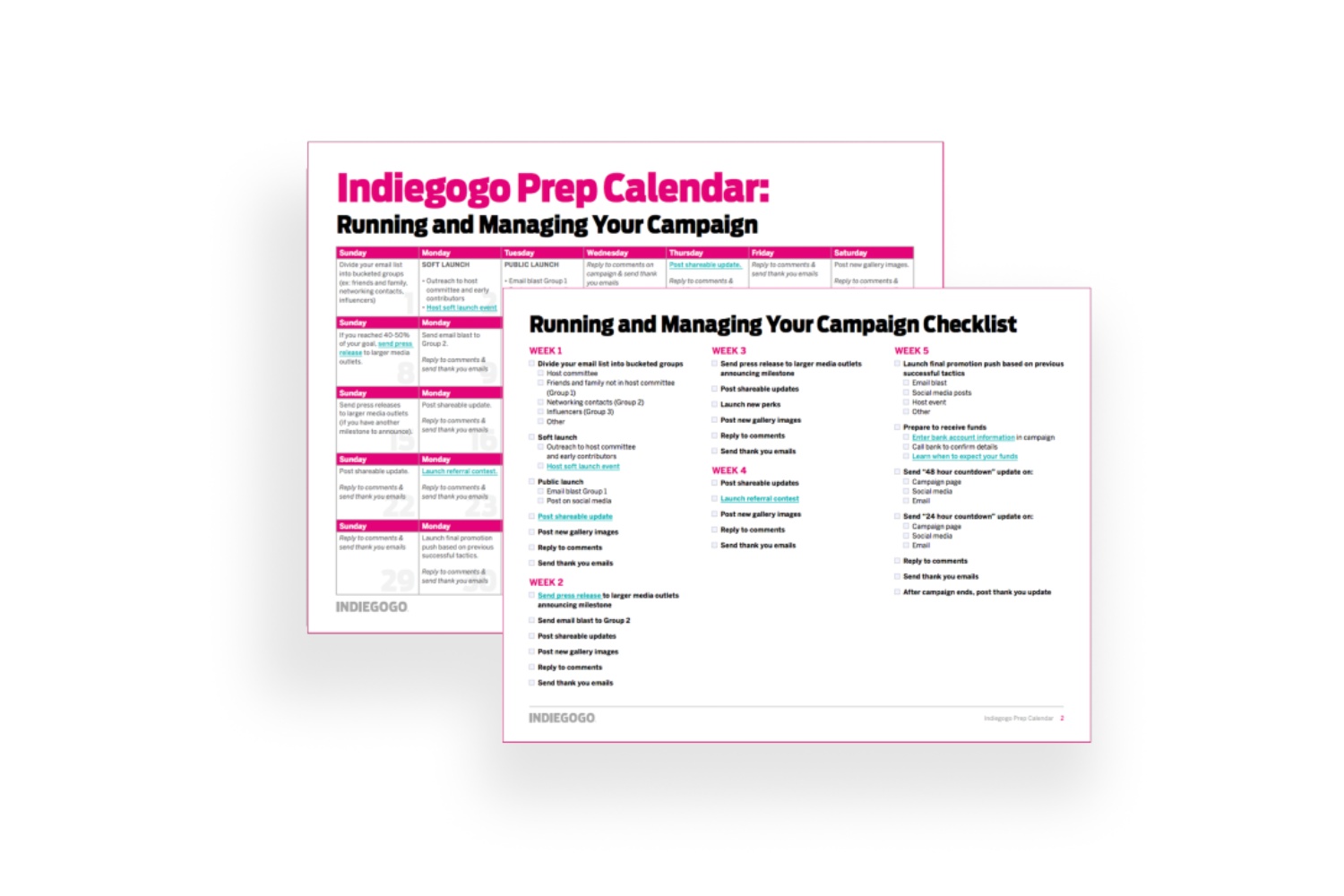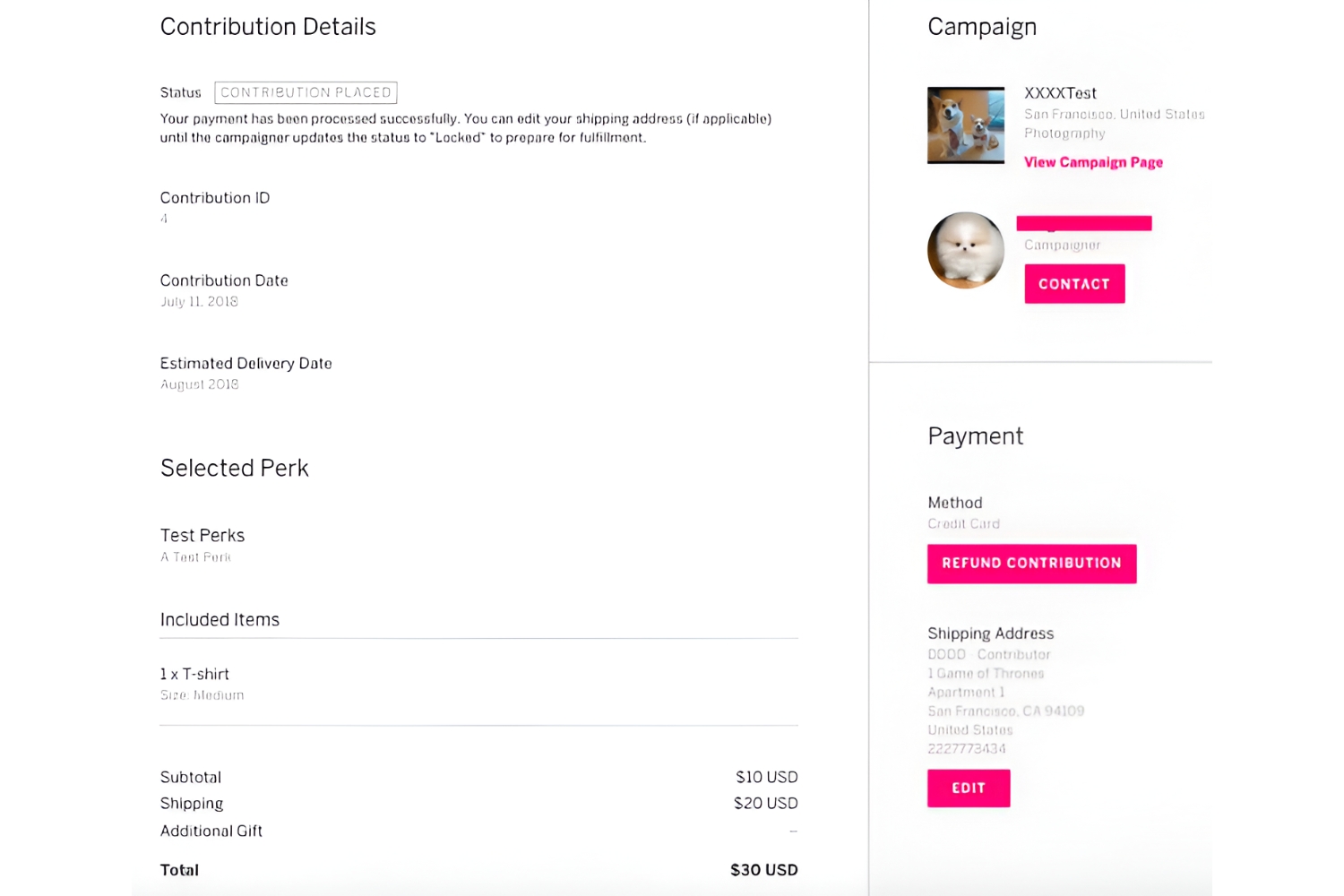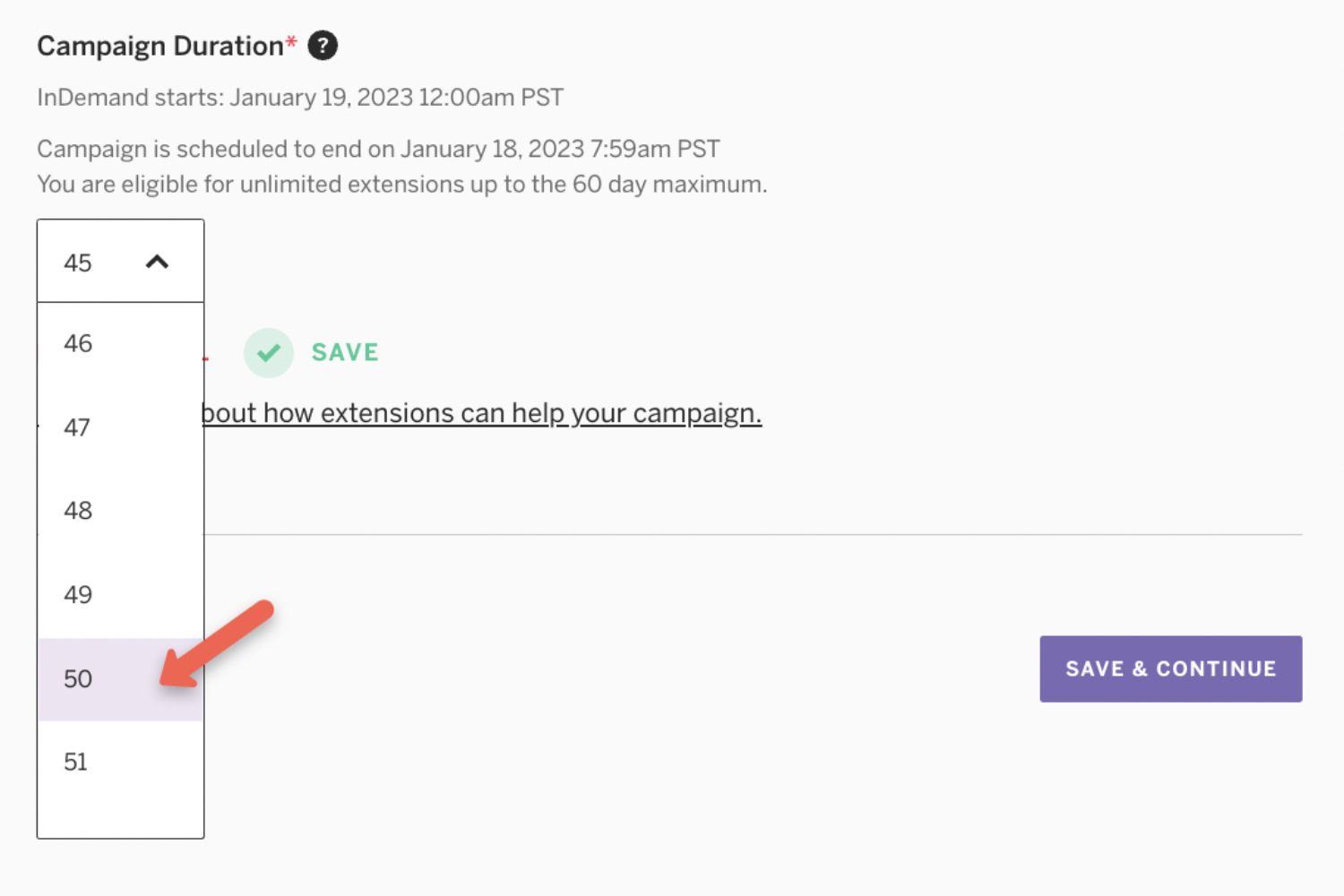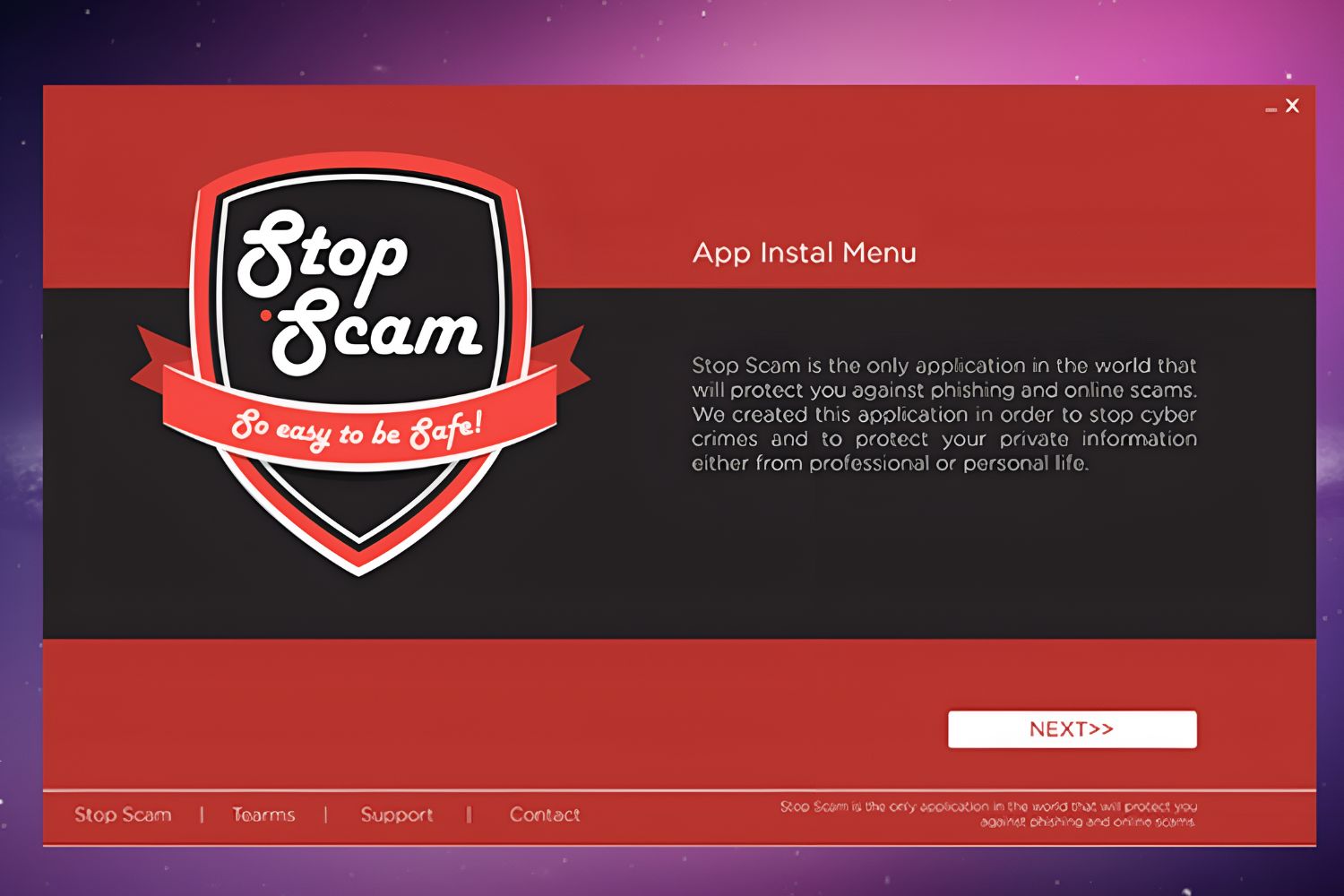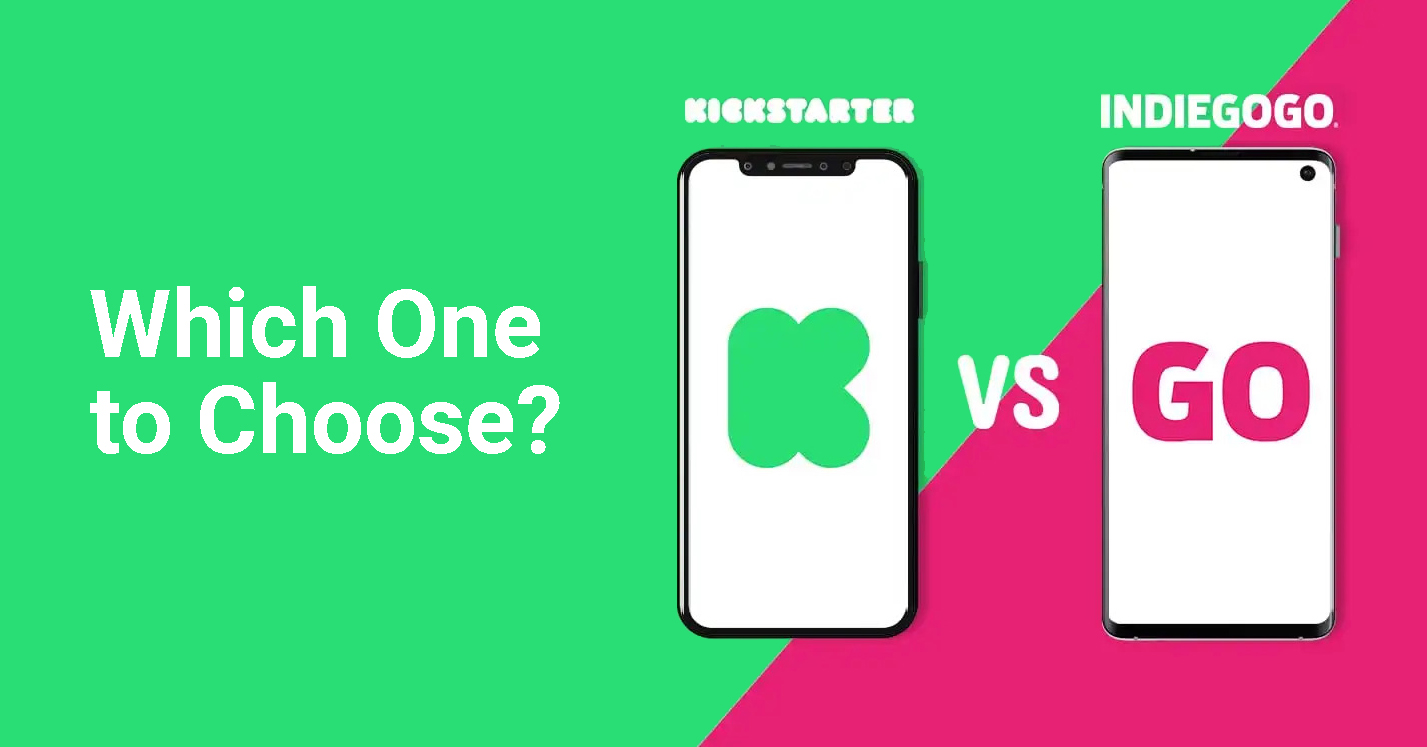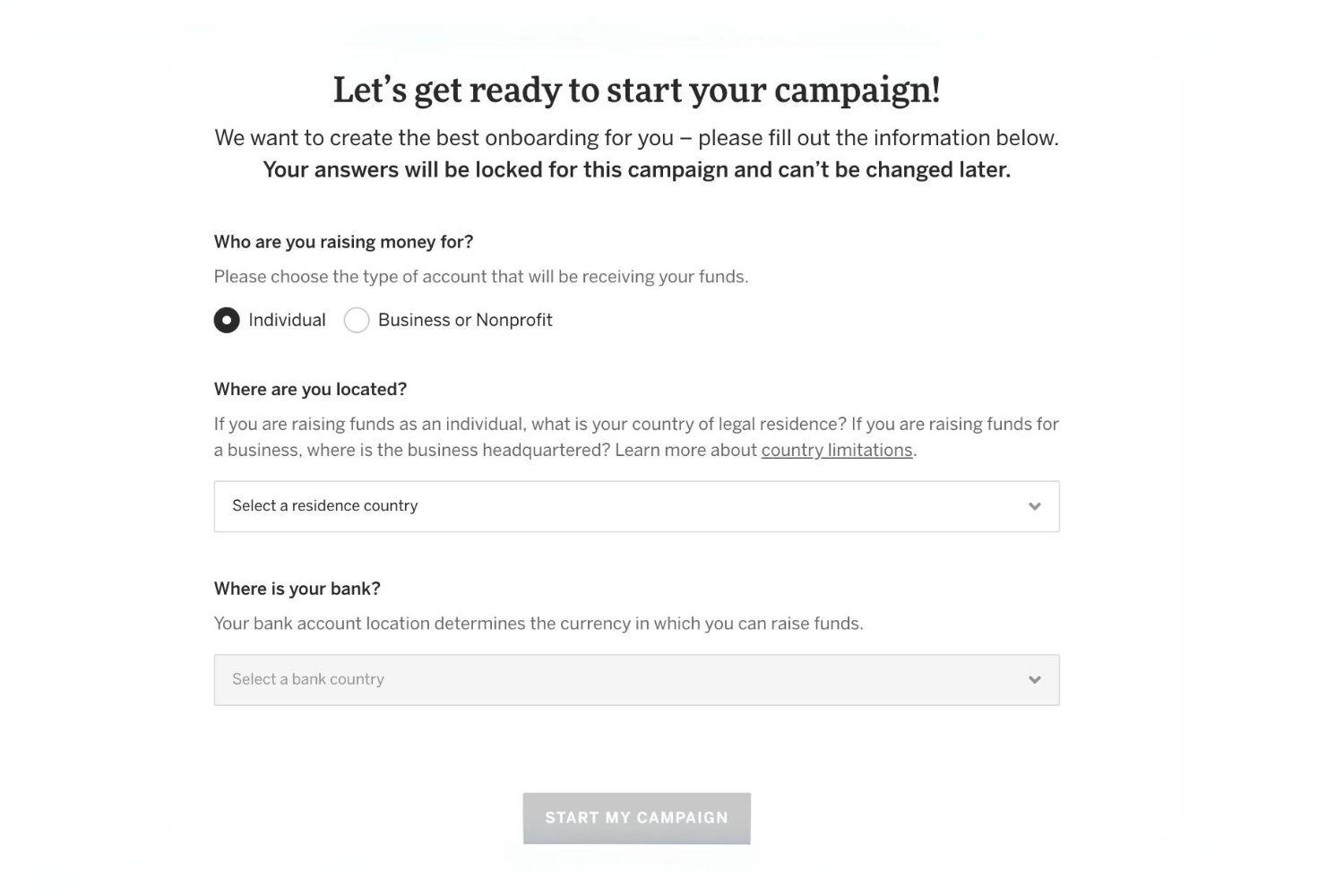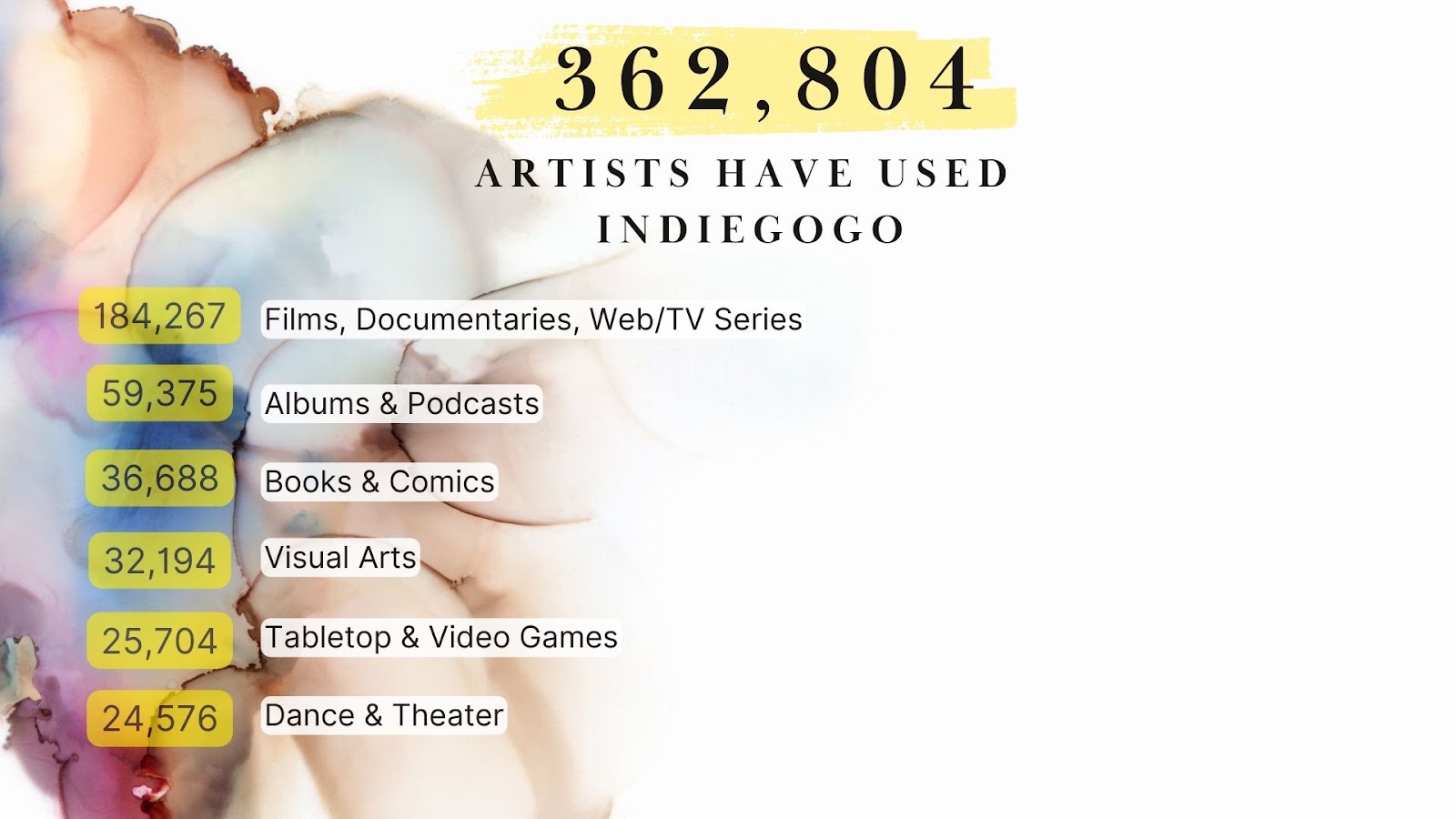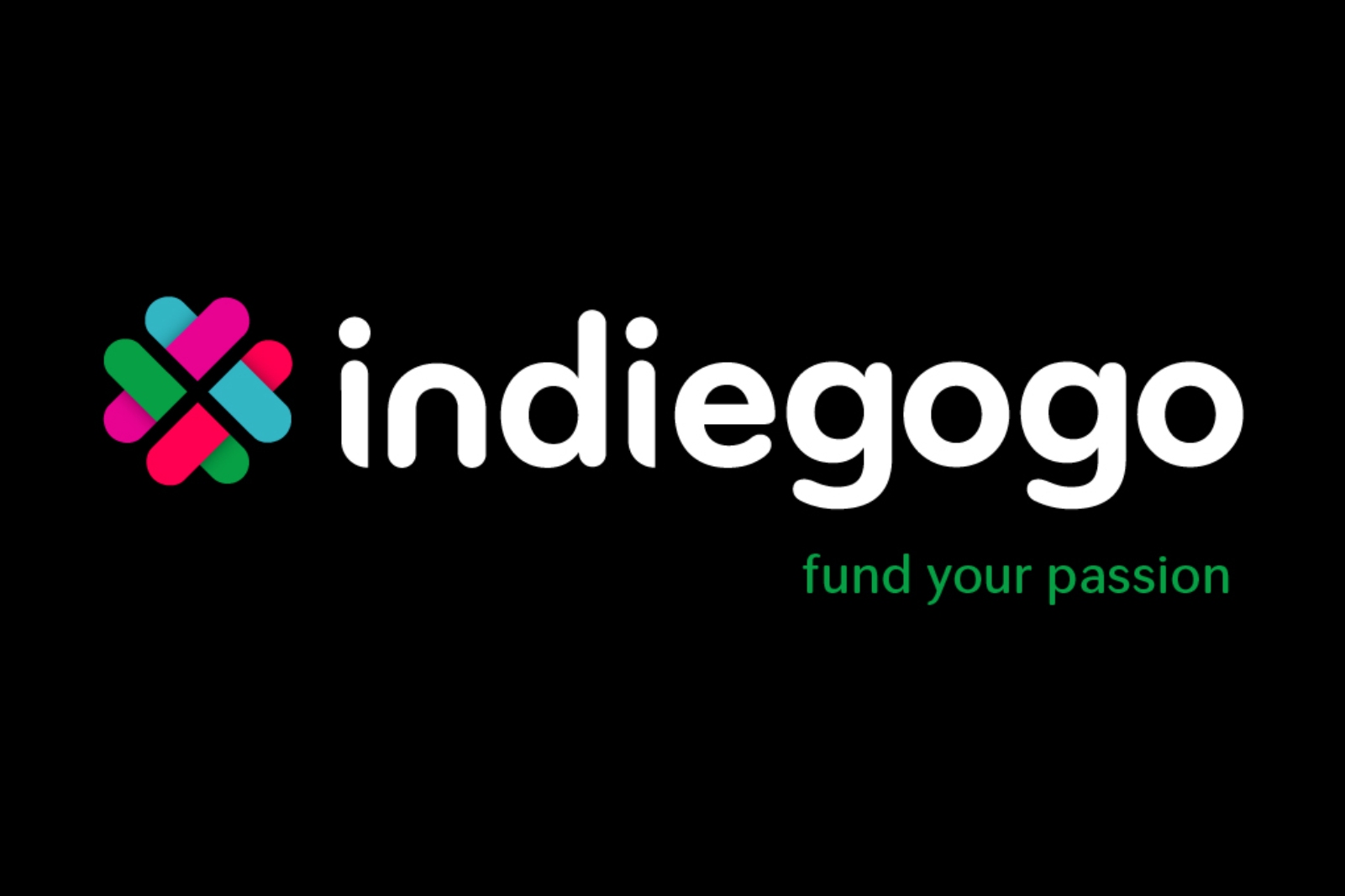Introduction
Launching a campaign on Indiegogo is an exciting journey that can help you turn your ideas into reality. However, diving into a full-scale campaign right away may not always be the best approach. This is where a soft launch can play a crucial role in ensuring the success of your Indiegogo campaign.
A soft launch refers to the initial phase of your campaign where you test the waters and gather feedback before the official launch. It allows you to gauge the interest and response from your target audience, fine-tune your campaign strategies, and make necessary adjustments to maximize its potential.
By taking the time to properly plan and execute a soft launch, you can significantly increase your chances of creating a buzz around your campaign and attracting early supporters. From crafting a compelling campaign page to building an engaged audience, implementing a well-thought-out soft launch strategy can make a world of difference in the overall success of your Indiegogo campaign.
In this article, we will explore the benefits of a soft launch, discuss how to set a timeline for your soft launch, and delve into various strategies to make your soft launch a success. By following these tips and techniques, you can ensure that your Indiegogo campaign gets off to a strong start and gains the attention it deserves.
What is a soft launch?
A soft launch refers to the initial phase of your campaign on Indiegogo where you introduce your project to a smaller, controlled audience before the official launch. It is a strategic approach to test the waters, gather feedback, and generate early interest in your campaign.
During a soft launch, you release your campaign page and make it accessible to a select group of individuals. This can include your friends, family, colleagues, and a small network of supporters who you trust to provide honest feedback. The goal is to gain insights into how your campaign page performs, identify any areas that need improvement, and refine your strategies before reaching a larger audience.
By conducting a soft launch, you can uncover potential issues or gaps in your campaign, allowing you to make necessary adjustments. It provides an opportunity to fine-tune your messaging, value proposition, and rewards to resonate better with your target audience. It also enables you to gauge the initial response and interest in your project, giving you a better understanding of the market demand and the potential for success.
Additionally, a soft launch allows you to build momentum and create buzz around your campaign. By generating early supporters and backers, you can create a sense of exclusivity and scarcity, making others more eager to support your project when it officially launches. This can help you gain traction and attract more attention from both your existing audience and potential backers.
Overall, a soft launch allows you to fine-tune your campaign, gather valuable feedback, and build initial momentum. It sets the stage for a successful Indiegogo campaign by ensuring that you have a solid foundation and a clear understanding of what works best for your project. Through this strategic approach, you can increase your chances of reaching your funding goals and creating a buzz around your campaign.
Benefits of a soft launch
A soft launch for your Indiegogo campaign offers a range of benefits that can significantly impact the success of your campaign. By taking the time to properly plan and execute a soft launch, you can set yourself up for a stronger and more impactful official launch. Let’s explore some of the key benefits:
1. Gather Feedback and Make Improvements
Launching your campaign to a smaller, controlled audience during a soft launch allows you to gather valuable feedback. You can learn what resonates with your audience, identify any areas that need improvement, and make necessary adjustments. This feedback can help you refine your messaging, rewards, and campaign strategies to ensure you are effectively addressing the needs and desires of your target audience.
2. Build Early Engagement and Momentum
A soft launch enables you to secure early supporters and generate initial buzz around your campaign. By creating a sense of exclusivity and scarcity, early backers can help build momentum and attract more attention from others. This can lead to increased credibility and visibility for your campaign, making it more likely to attract a larger audience and gain traction in the Indiegogo community.
3. Test Campaign Strategies and Messaging
During the soft launch, you have the opportunity to test different campaign strategies, messaging techniques, and reward structures. By analyzing the performance of your campaign page and tracking the response from your audience, you can determine what aspects are most effective and make data-backed decisions for your official launch. This allows you to optimize your campaign to resonate with your target audience and increase your chances of success.
4. Identify and Cultivate Influential Backers
During the soft launch, you can identify influential backers who are passionate about your project. These individuals can serve as brand ambassadors and help promote your campaign to their networks, extending your reach and potentially attracting more backers. Cultivating relationships with these influential backers early on can have long-lasting benefits throughout your campaign.
5. Fine-Tune your Campaign Page
A soft launch provides an opportunity to analyze the performance of your campaign page, including the visuals, videos, and overall user experience. By studying metrics such as click-through rates, bounce rates, and conversion rates, you can optimize your campaign page to be more engaging, persuasive, and user-friendly, leading to a higher conversion rate and increased support.
In essence, a soft launch allows you to test and refine your campaign, build momentum, and gather valuable feedback. By leveraging these benefits, you can increase your chances of success and create a strong foundation for your Indiegogo campaign.
Setting a timeline for your soft launch
When it comes to a successful soft launch for your Indiegogo campaign, setting a well-defined timeline is crucial. A timeline provides structure, helps you stay organized, and ensures that you have enough time to implement necessary strategies. Let’s explore some essential steps for setting a timeline for your soft launch:
1. Research and Planning
Start by conducting thorough research about your target audience, competitors, and successful campaigns in your niche. This will help you understand the market demand, identify potential challenges, and develop a solid plan for your campaign. Set aside enough time for research and planning, as it forms the foundation of your soft launch strategy.
2. Campaign Preparation
Allocate time for preparing your campaign materials, including compelling visuals, videos, campaign page content, and rewards. Plan the creation of these assets in advance, allowing for ample time to perfect them. Remember that high-quality visuals and engaging videos are essential for capturing the attention of potential backers during your soft launch.
3. Building an Email List
To maximize the impact of your soft launch, dedicate time and resources to building a strong email list. Start early by creating lead generation opportunities such as offering exclusive sneak peeks, early access, or valuable content related to your campaign. Allocate sufficient time to collect and nurture email leads to ensure a robust list for your soft launch.
4. Engaging your Existing Audience
If you already have an existing audience, allocate time to engage and nurture them leading up to your soft launch. Communicate with your audience through newsletters, blog posts, social media, or even virtual events to build excitement and anticipation. Consider offering incentives or exclusive perks to reward their loyalty and encourage them to support your campaign during the soft launch.
5. Social Media Strategy
Develop a comprehensive social media strategy and allocate time for creating engaging content to promote your soft launch. Schedule posts in advance, interact with your audience, and leverage relevant hashtags and influencers to expand your reach. A consistent and strategic social media presence leading up to the soft launch can help generate buzz and attract new supporters.
6. Preparing for Feedback and Adjustments
Set aside time during your soft launch for collecting feedback and making necessary adjustments. Be prepared to monitor your campaign page’s performance, engage with early supporters, and analyze the data to identify areas that need improvement. Allow enough time to implement changes and refine your campaign strategies based on the feedback received.
By setting a timeline for your soft launch and allocating sufficient time for each step, you can ensure that you have a well-organized and effective strategy in place. Remember, the timeline may vary depending on the nature of your campaign and your target audience, so adapt it accordingly to maximize your chances of a successful soft launch.
Crafting your campaign page
Your campaign page on Indiegogo is your chance to make a compelling and persuasive case for your project. It serves as the central hub where potential backers can learn about your project, understand its value, and make the decision to support it. Crafting a well-designed and informative campaign page is crucial for the success of your Indiegogo campaign. Here are some key considerations for crafting an impactful campaign page:
1. Strong and Engaging Headline
Your headline is the first thing that potential backers will see, so it needs to be attention-grabbing and compelling. Use clear and concise language that clearly communicates the value and unique selling proposition of your project. Make sure it is concise, memorable, and resonates with your target audience.
2. Compelling Storytelling
Your campaign page should tell a captivating story that connects with potential backers on an emotional level. Use storytelling techniques to convey the problem your project solves, why it matters, and how it will make a positive impact. Incorporate personal experiences, anecdotes, and visuals to make your story more relatable and engaging.
3. Visual Appeal
High-quality visuals are crucial for capturing the attention of potential backers. Include compelling images, videos, and graphics that showcase your project and demonstrate its value. Use professional-quality visuals that highlight the features and benefits of your project and evoke the desired emotions in your audience.
4. Clear and Concise Information
Present the information about your project in a clear and concise manner. Highlight the key benefits, features, and rewards associated with supporting your project. Use bullet points, subheadings, and bold text to make important information stand out and improve readability. Ensure that the information is easy to scan and understand at a glance.
5. Transparent and Realistic Funding Goals
Be transparent about your funding goals and clearly explain how the funds will be used. Provide a breakdown of the costs involved and show potential backers that you have a realistic plan in place. Backers want to feel confident that their contributions will be used wisely and effectively.
6. Compelling Rewards and Incentives
Create a range of appealing rewards and incentives for different levels of support. Make sure the rewards are enticing, unique, and aligned with the interests of your target audience. Clearly explain the value and benefits of each reward to increase the likelihood of attracting backers at various levels.
By carefully crafting your campaign page with these considerations in mind, you can effectively communicate the value and impact of your project. A well-designed and informative campaign page will attract potential backers, inspire them to support your project, and increase the chances of reaching your funding goals.
Building a strong email list
Building a strong email list is a critical aspect of your Indiegogo campaign’s success. An engaged and responsive email list allows you to directly connect with your potential backers, nurture relationships, and keep them informed throughout your campaign. Here are some effective strategies for building a strong email list:
1. Lead Generation Campaign
Create a lead generation campaign to capture the contact information of potential backers who are interested in your project. Offer an incentive, such as exclusive sneak peeks, early access, or valuable content related to your project, to entice them to provide their email address. This can be done through a dedicated landing page or a popup on your website.
2. Opt-In Forms on Your Website
Add opt-in forms to your website, allowing visitors to subscribe to your email list. Ensure that these forms are prominently placed and offer a compelling reason for visitors to sign up. Consider offering a valuable piece of content or a discount on future purchases to encourage sign-ups.
3. Social Media Promotion
Promote your email list on social media platforms to reach a wider audience. Create posts that highlight the benefits of subscribing and provide a link to your signup page. Encourage your audience to join your email list to receive exclusive updates, behind-the-scenes content, or early access to your campaign.
4. Collaboration with Influencers
Collaborate with influencers or industry experts who align with your project. Ask them to promote your email list to their followers, generating more sign-ups from their dedicated audience. This collaboration can help expand your reach and attract a highly targeted and engaged audience.
5. Offline Events and Networking
Participate in relevant offline events, trade shows, or meetups to connect with potential backers in person. Collect email addresses from interested individuals and follow up with them after the event. Networking can be a powerful way to build relationships and grow your email list organically.
6. Engaging Content and Value
Consistently provide valuable and engaging content to your email list. Share updates about your project, behind-the-scenes insights, and exclusive offers or discounts. Show your subscribers that being part of your email list brings value and benefits beyond just receiving campaign updates.
Remember to always ask for permission and comply with local email marketing laws and regulations when collecting and utilizing email addresses. Focus on building a quality email list by targeting individuals who are genuinely interested in your project, as this will lead to higher engagement and conversion rates.
By implementing these strategies and continually growing and nurturing your email list, you can establish a direct line of communication with your potential backers, keep them engaged throughout your campaign, and increase the chances of successfully reaching your funding goals on Indiegogo.
Engaging your existing audience
Your existing audience is a valuable asset when it comes to the success of your Indiegogo campaign. Engaging with your current supporters can help create a strong foundation for your campaign and increase the likelihood of their continued support. Here are some effective strategies for engaging your existing audience:
1. Regular Updates and Communication
Keep your audience informed and engaged by regularly providing updates about your project. Send out newsletters, personalized emails, or create a dedicated blog to share progress, milestones, and exciting developments. Maintain open lines of communication and encourage your audience to share their thoughts, feedback, and questions.
2. Create a Sense of Exclusivity
Offer exclusive perks, rewards, or early access to your existing audience. Make them feel appreciated and valued by providing VIP treatment. This can include behind-the-scenes content, special discounts, or limited edition items. Cultivate a sense of exclusivity to motivate your existing audience to continue supporting your campaign.
3. Request Feedback and Input
Involve your audience in the decision-making process by seeking their feedback and input. This can be through surveys, polls, or direct communication. Show that you value their opinions and take their feedback into consideration. By involving your audience, you make them feel invested in the project and increase their connection to your campaign.
4. User-Generated Content
Encourage your existing audience to share and create content related to your campaign. This can include testimonials, reviews, social media posts, and videos. User-generated content not only showcases the genuine enthusiasm and support for your project but also helps spread the word to a wider audience.
5. Recognize and Reward Loyalty
Publicly recognize and reward the loyalty of your existing audience. Highlight their contributions, comments, or achievements during your campaign. This can be done through social media shoutouts, special acknowledgments, or even featuring them in campaign updates. Showcasing their support incentivizes continued engagement and encourages others to follow suit.
6. Personalized Engagement
Engage with your existing audience on a personal level whenever possible. Respond to their comments, messages, and emails promptly and thoughtfully. Engaging in meaningful conversations not only strengthens the connection between you and your audience but also builds trust and loyalty.
Remember that your existing audience has already shown an interest in your project, and nurturing that relationship is key to driving their continued support. By implementing these strategies and maintaining ongoing engagement, you can cultivate a dedicated and enthusiastic community of supporters who will champion your Indiegogo campaign.
Utilizing social media platforms
Social media platforms are powerful tools when it comes to promoting and generating buzz for your Indiegogo campaign. With billions of active users, these platforms provide a wide-reaching and highly engaged audience. Here are some effective strategies for utilizing social media platforms:
1. Choose the Right Platforms
Identify the social media platforms where your target audience is most active. Focus on platforms that align with your campaign’s goals and content. Whether it’s Facebook, Instagram, Twitter, LinkedIn, or others, ensure that you are targeting the platforms that will have the greatest impact on your campaign’s success.
2. Develop a Consistent Brand Presence
Create a strong and consistent brand presence on your chosen social media platforms. Use cohesive branding, including visuals, color schemes, and tone of voice, to reinforce your campaign’s identity. Ensure that your messaging aligns with your campaign’s goals and resonates with your audience.
3. Engage with Your Audience
Engage with your audience by responding to comments, messages, and mentions. Encourage discussions and actively participate in conversations related to your campaign. By showing that you value and appreciate your audience, you can foster a sense of community and build stronger connections.
4. Share Compelling and Shareable Content
Create and share content that is engaging, informative, and shareable. This can be in the form of text posts, images, videos, or even live streams. Consider using storytelling techniques, behind-the-scenes footage, or user-generated content to enhance the appeal and encourage sharing among your audience.
5. Leverage Influencers and Collaborations
Collaborate with influencers or industry experts who align with your project. Partnering with influencers can expose your campaign to their dedicated and engaged audience, increasing the reach and visibility of your campaign. Seek out influencers who have a genuine interest in your project and target audience.
6. Utilize Paid Advertising
Consider utilizing paid advertising options provided by social media platforms. These include targeted ads, sponsored posts, and promoted content. Allocate a budget for paid advertising to reach a wider audience and increase the visibility of your campaign. Experiment with different ad formats and audience targeting to optimize your campaign’s performance.
Remember to track and analyze the performance of your social media efforts. Utilize social media analytics to understand which strategies are most effective in driving engagement and conversions. This will help you refine your social media approach and amplify the impact of your Indiegogo campaign.
Teaming up with influencers and bloggers
Collaborating with influencers and bloggers can significantly boost the visibility and reach of your Indiegogo campaign. These individuals have established audiences who trust and value their opinions, making them powerful advocates for your project. Here are some effective strategies for teaming up with influencers and bloggers:
1. Identify Relevant Influencers and Bloggers
Research and identify influencers and bloggers who align with your campaign’s theme and target audience. Look for individuals who have a genuine interest in your project or have created content related to similar campaigns. Ensure that their values and followers align with your campaign goals.
2. Reach Out with a Personalized Pitch
Craft a personalized pitch that highlights why you believe the influencer or blogger would be a great fit for your campaign. Tailor your message to show that you have done your research and understand their audience and content. Clearly articulate the value and benefits they will receive from partnering with you.
3. Offer Exclusive Perks and Incentives
Provide influencers and bloggers with exclusive perks or incentives to entice them to participate in your campaign. This can include early access to your product, personalized collaborations, or custom incentives for them to offer to their audience. Make it mutually beneficial for both parties involved.
4. Collaborate on Content Creation
Work closely with influencers and bloggers to collaborate on creating engaging content. This can range from in-depth product reviews and unboxing videos to guest blog posts or Instagram takeovers. Allow them to share their genuine experiences and thoughts about your project, as this will resonate with their audience.
5. Provide Promotional Materials and Assets
Make it easy for influencers and bloggers to promote your campaign by providing them with promotional materials and assets. This can include high-resolution images, logos, campaign videos, and any other relevant content they may need. Offer them options to customize these materials to fit their brand and style.
6. Track and Acknowledge their Contributions
Keep track of each influencer’s contribution to your campaign and acknowledge their efforts publicly. Show appreciation for their support and highlight their involvement through social media shout-outs, campaign updates, or a dedicated “thank you” section on your campaign page. This helps build a positive relationship and encourages continued support.
Remember, influencer and blogger collaborations can greatly expand the reach and impact of your Indiegogo campaign. Approach these partnerships strategically and build genuine relationships with those who align with your project and target audience. By leveraging their influence and expertise, you can effectively attract more backers and achieve the success you desire.
Designing compelling visuals and videos
When it comes to capturing the attention and interest of your target audience, visually appealing and engaging content is key. By designing compelling visuals and videos for your Indiegogo campaign, you can effectively convey the value, uniqueness, and impact of your project. Here are some strategies for creating visually compelling content:
1. High-Quality Images
Invest in high-quality images that showcase your project in the best possible light. Whether it’s product images, lifestyle shots, or behind-the-scenes visuals, ensure that they are clear, well-lit, and visually appealing. High-quality images instill trust and create a positive impression of your project.
2. Professional Video Production
Create professional videos to tell your project’s story and showcase its features and benefits. Consider hiring a videographer or partnering with a video production company to ensure high production value. Use the power of storytelling and compelling visuals to engage and captivate your audience.
3. Clear and Engaging Infographics
Utilize infographics to present complex information, statistics, or comparisons in a visually appealing and easy-to-understand manner. Clear and concise infographics can help convey the value and impact of your project more effectively, increasing comprehension and engagement.
4. Multimedia Demonstrations
Create interactive and multimedia demonstrations if applicable to your project. This can include 3D renderings, virtual reality experiences, or interactive prototypes. Presenting your project in an immersive and engaging way can help potential backers better understand its features and envision the end result.
5. User-Generated Content
Utilize user-generated content, such as testimonials, reviews, or user-submitted images and videos, to showcase real-life experiences and build social proof. Incorporating authentic content from your existing customers or early supporters adds credibility and helps potential backers connect with your project.
6. Brand Consistency
Maintain brand consistency across all visual elements. Use consistent colors, fonts, and design elements throughout your campaign materials, website, and social media platforms. A cohesive and visually appealing brand image helps reinforce your project’s identity and professionalism.
Remember to optimize your visuals and videos for different platforms and devices to ensure they are easily viewable and sharable. Test the loading speed and mobile responsiveness of your visuals to provide a seamless experience for your audience.
By designing compelling visuals and videos, you can effectively communicate the uniqueness and value of your project. Visual content has the power to captivate and engage your audience, increasing their interest and likelihood of supporting your Indiegogo campaign.
Collecting feedback and making improvements
Collecting feedback from your audience is a crucial step in optimizing your Indiegogo campaign. By actively seeking feedback and making necessary improvements, you can enhance your campaign’s effectiveness, appeal, and overall success. Here are some strategies for collecting feedback and making improvements:
1. Engage with Early Supporters
Engage with your early supporters and backers by actively communicating with them. Encourage them to provide feedback and suggestions about your campaign, rewards, messaging, or any other aspect. Create a welcoming and open environment where their opinions are valued and respected.
2. Utilize Surveys and Polls
Create surveys and polls to gather structured feedback from your audience. Use platforms such as Google Forms or SurveyMonkey to create questionnaires that touch on various aspects of your campaign. Ask specific questions about the campaign page, rewards, or overall messaging to gain insights and identify areas that need improvement.
3. Monitor and Analyze Campaign Metrics
Take advantage of the campaign metrics and analytics provided by Indiegogo. Monitor data such as page views, conversion rates, and funding progress to identify patterns and areas for improvement. Analyzing this data helps you understand which aspects of your campaign are resonating with your audience and which ones may need tweaking.
4. Listen to Your Audience on Social Media
Pay attention to comments, messages, and mentions on social media related to your campaign. Actively listen to what your audience is saying and respond to their feedback. Whether it’s positive or constructive criticism, use this feedback to make necessary adjustments and improvements to your campaign.
5. Conduct A/B Testing
Experiment with different elements of your campaign using A/B testing. Test various versions of your campaign page, rewards, or messaging to see which ones resonate better with your audience. Analyze the results and make data-driven decisions to optimize your campaign based on the feedback received.
6. Iterate and Update Your Campaign
As you collect feedback and make improvements, continuously update and iterate your campaign. Implement changes in real-time to ensure that your campaign remains relevant and engaging. Regularly communicate with your audience and inform them of any updates or improvements you have made based on their feedback.
Remember, the feedback you receive is invaluable in helping you refine and improve your Indiegogo campaign. By actively collecting feedback, listening to your audience, and making necessary improvements, you can create a stronger and more compelling campaign that resonates with your target audience, increasing your chances of success.
Preparing for the official launch
Preparing for the official launch of your Indiegogo campaign is a crucial phase that can significantly impact its success. By taking the time to plan, strategize, and execute key elements, you can effectively generate momentum and attract the support you need. Here are some essential steps to consider when preparing for your campaign’s official launch:
1. Refine Your Campaign Page
Take the feedback and insights gathered during the soft launch period to refine and improve your campaign page. Make necessary adjustments to your headline, storytelling, visuals, and rewards based on the feedback received. Ensure that your campaign page clearly communicates the value and impact of your project, compelling potential backers to support your campaign.
2. Create a Launch Plan
Develop a detailed plan for your official launch. Set a specific launch date and time that maximizes exposure and aligns with your target audience’s preferences. Prepare a calendar of promotional activities, including social media posts, email blasts, and influencer collaborations, to ensure a consistent and cohesive campaign launch strategy.
3. Build Anticipation
Start building anticipation for your campaign launch prior to the official launch date. Tease your audience with sneak peeks, behind-the-scenes content, and previews of the rewards or exclusive perks they can expect. Utilize social media, email marketing, and your existing audience to generate buzz and excitement leading up to the launch.
4. Generate Media and Press Coverage
Reach out to relevant media outlets, bloggers, and journalists to generate media coverage for your campaign. Craft compelling press releases that highlight the unique aspects and newsworthy elements of your project. Leverage your existing connections or collaborate with PR professionals to increase your chances of securing media exposure.
5. Activate Your Network
Mobilize your existing network of friends, family, colleagues, and supporters to rally behind your campaign. Ask them to share your campaign page, create social media buzz, and invite their networks to support your project. Leverage the power of word-of-mouth marketing to broaden your reach and attract new supporters.
6. Engage with Backers
Prepare a plan to actively engage with your backers throughout the campaign. Respond promptly to their messages, comments, and inquiries. Provide regular updates on the progress of your campaign and acknowledge their support. Cultivate a sense of community and foster relationships to encourage continued support and advocacy.
By meticulously preparing for the official launch of your Indiegogo campaign, you can generate excitement, attract backers, and set yourself up for a successful funding journey. Remember to stay organized, adapt your strategies as needed, and maintain open lines of communication with your audience throughout the campaign.







